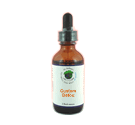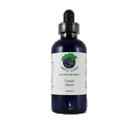 Arthropod/Vector
Bacteria
Chemicals
Fungus /Mold
/ Yeast Metals Parasites Virus Other Arthropod/Vector
Bacteria
Chemicals
Fungus /Mold
/ Yeast Metals Parasites Virus Other
|
PCB's
Fish consumption appears to be the major pathway of exposure. PCBs do not easily break down and can bioaccumulate in the fatty tissues of fish and mammals. A significant trend of increasing body burden is associated with increased fish consumption. People who live near hazardous waste sites may be exposed to PCBs by consuming PCB contaminated sport fish and game animals, by breathing PCBs in air, or by drinking PCB contaminated well water. PCBs generally biomagnify along the food-chain, which leads to greater PCB concentrations in organisms that are higher up in the food chain. Although PCBs are no longer made in the United States, people can still be exposed to them. Many older transformers and capacitors may still contain PCBs, and this equipment can be used for 30 years or more. Old fluorescent lighting fixtures and old electrical devices and appliances, such as television sets and refrigerators, may contain PCBs if they were made before PCB use was stopped. When these electric devices get hot during operation, small amounts of PCBs may get into the air and raise the level of PCBs in indoor air. Because devices that contain PCBs can leak with age, they could also be a source of skin exposure to PCBs. Workplace exposure to PCBs can occur during the repair and maintenance of PCB transformers, accidents, fires, or spills involving PCB transformers and older computers and instruments, and disposal of PCB materials. In addition to older electrical instruments and fluorescent lights that contain PCB-filled capacitors, caulking materials, elastic sealants, and heat insulation have also been known to contain PCBs. Contact with PCBs at hazardous waste sites can happen when workers breathe air and touch soil containing PCBs. Exposure in the contaminated workplace occurs mostly by breathing air containing PCBs and by touching substances that contain PCBs. Thousands of medical PCB studies have shown that polychlorinated biphenyls (PCBs) cause a wide variety of health effects, often at very low exposure levels. The average American already carries enough PCB in his or her body to meet or exceed the minimum threshold for beginning health problems due to PCBs. Not all of the 209 kinds of PCB have the same effects. Some have properties like dioxin (one of the world's most toxic man-made compounds), some PCBs act like hormones, and other PCBs are nerve poisons. PCBs alter major systems in the body (immune, hormone, nervous, and enzyme systems); and affect a wide variety of body organs and functions. |
|



